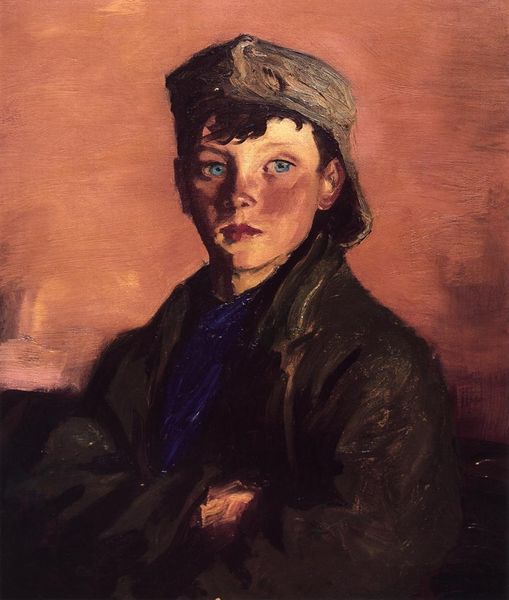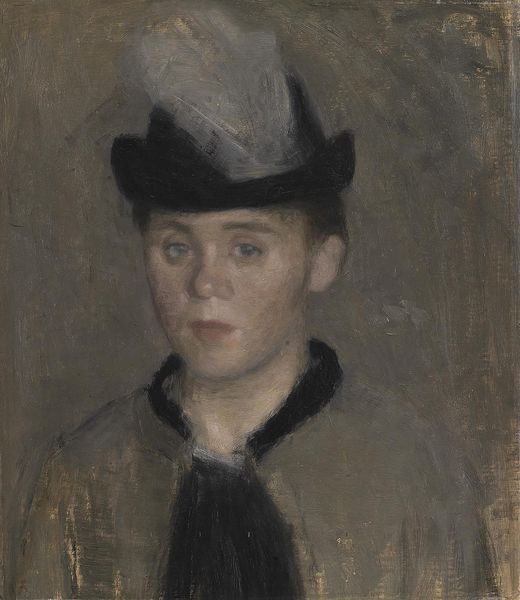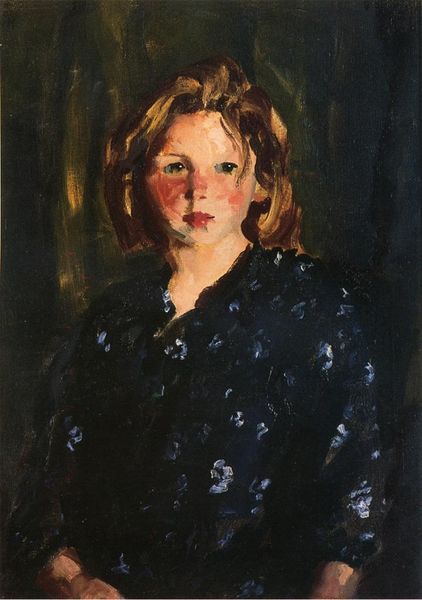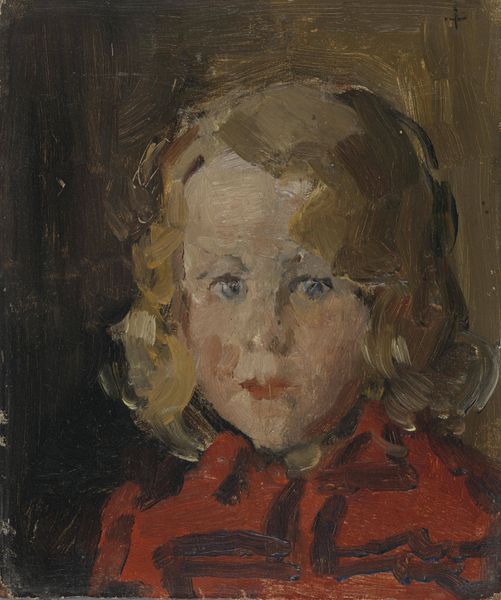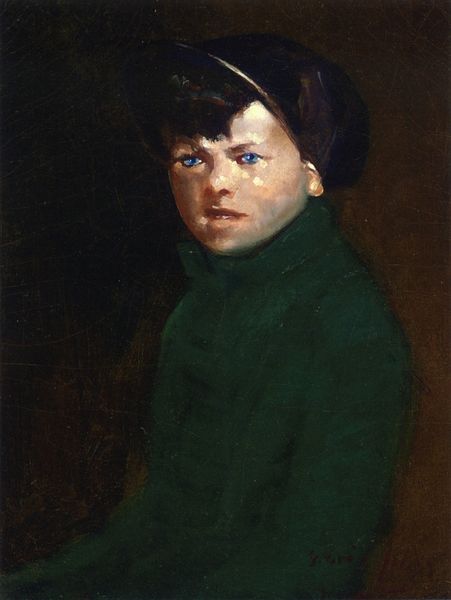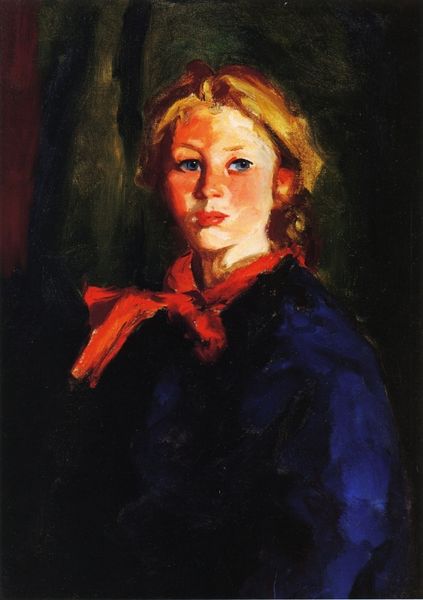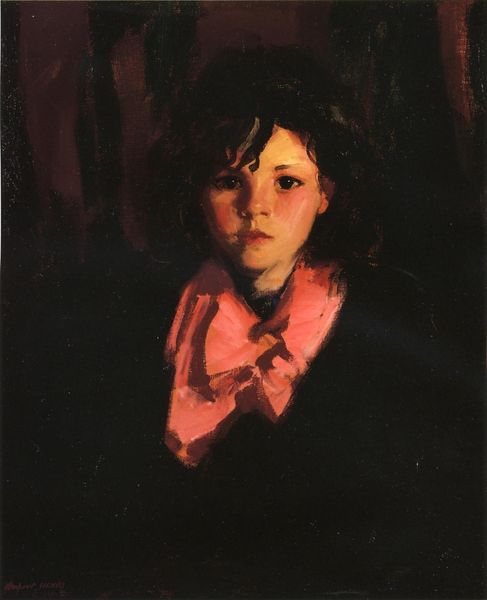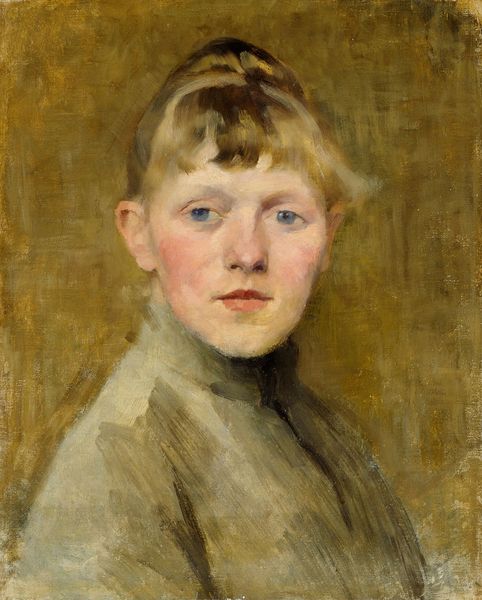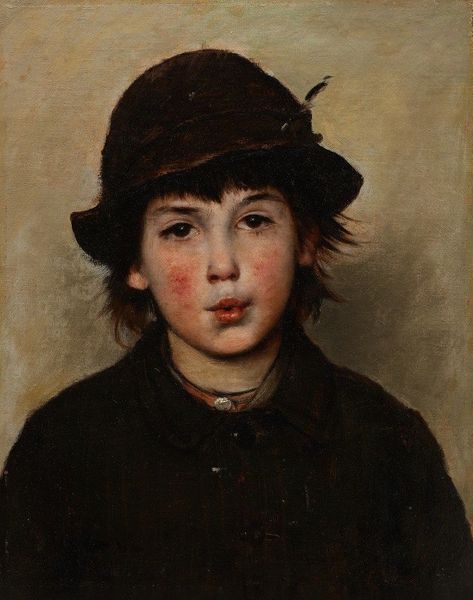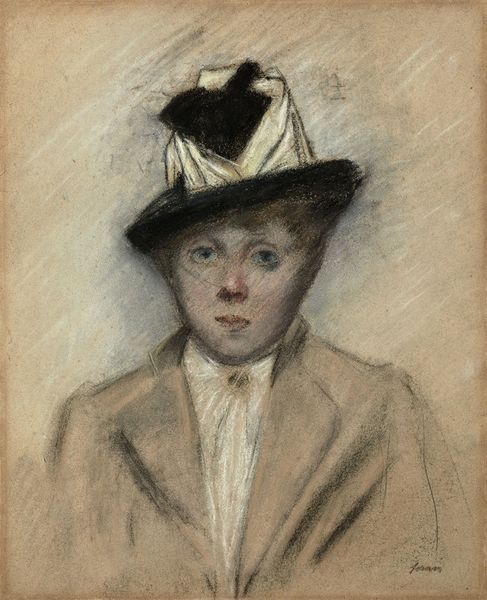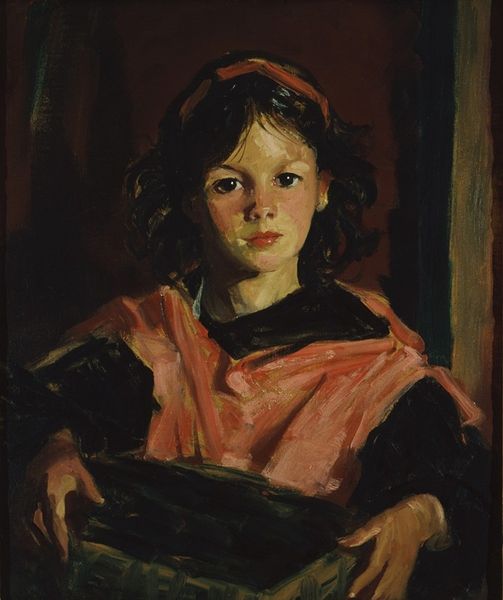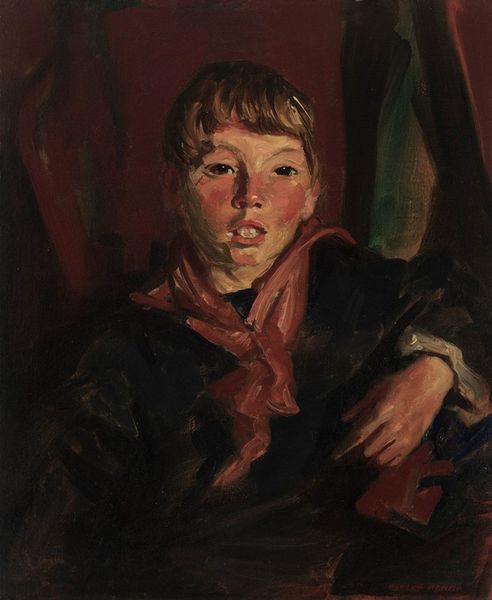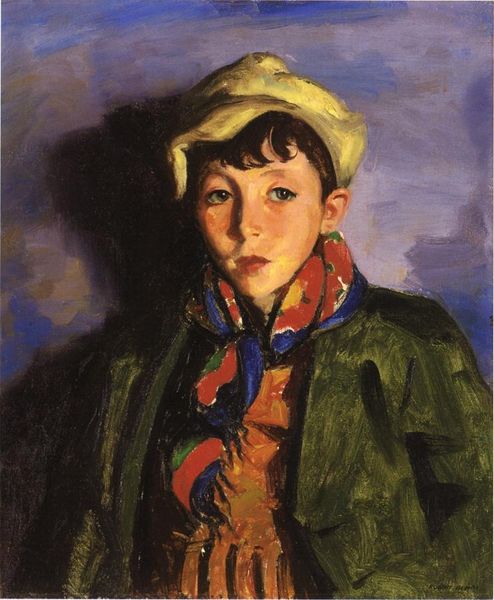
Dimensions: support: 457 x 356 mm
Copyright: CC-BY-NC-ND 4.0 DEED, Photo: Tate
Curator: Looking at Rodrigo Moynihan's "Private Clarke, A.T.S." it's striking how a portrait can capture so much more than just a likeness. Editor: The first thing that hits me is the intensity of those red lips against the muted background. It almost feels like a challenge, a silent scream in the face of… well, everything. Curator: Indeed, Moynihan painted this during the Second World War. As part of the Auxiliary Territorial Service, Clarke would have been involved in vital support roles. The portrait speaks to the changing role of women during wartime. Editor: And the brushstrokes! So loose, almost unfinished. It’s as if Moynihan is saying, “This is Clarke in this moment, but she’s also part of something much bigger, something unresolved.” It's all a bit haunting to me. Curator: Haunting's a good word. The portrait is a visual reminder of the personal sacrifices made during the war. Editor: It’s more than just a name and uniform; it’s a story etched in those eyes and that defiant red. I am so moved.
Comments
tate 6 months ago
⋮
http://www.tate.org.uk/art/artworks/moynihan-private-clarke-ats-n05714
Join the conversation
Join millions of artists and users on Artera today and experience the ultimate creative platform.
tate 6 months ago
⋮
In the late 1930s Moynihan was associated with the Euston Road School, committed to realist painting. In 1940 he trained as an artillery man and was commissioned in camouflage before becoming a war artist in 1943. Many of his portraits of high-ranking officers and advisers are now in the Imperial War Museum. His portraits were often swiftly executed but sensitively observed. Influenced by artists such as Edouard Manet and Diego Velazquez, Moynihan used a rich sensuous brushstroke to convey a sense of this young service woman's physicality. During the war women were urged to look their best at all times to boost morale. Lipstick became known as the 'red badge of courage'. Gallery label, August 2004
